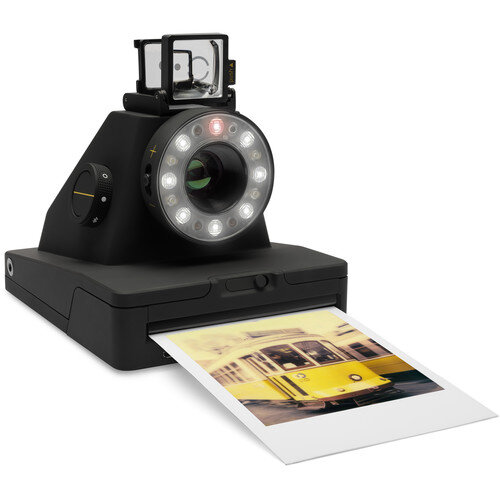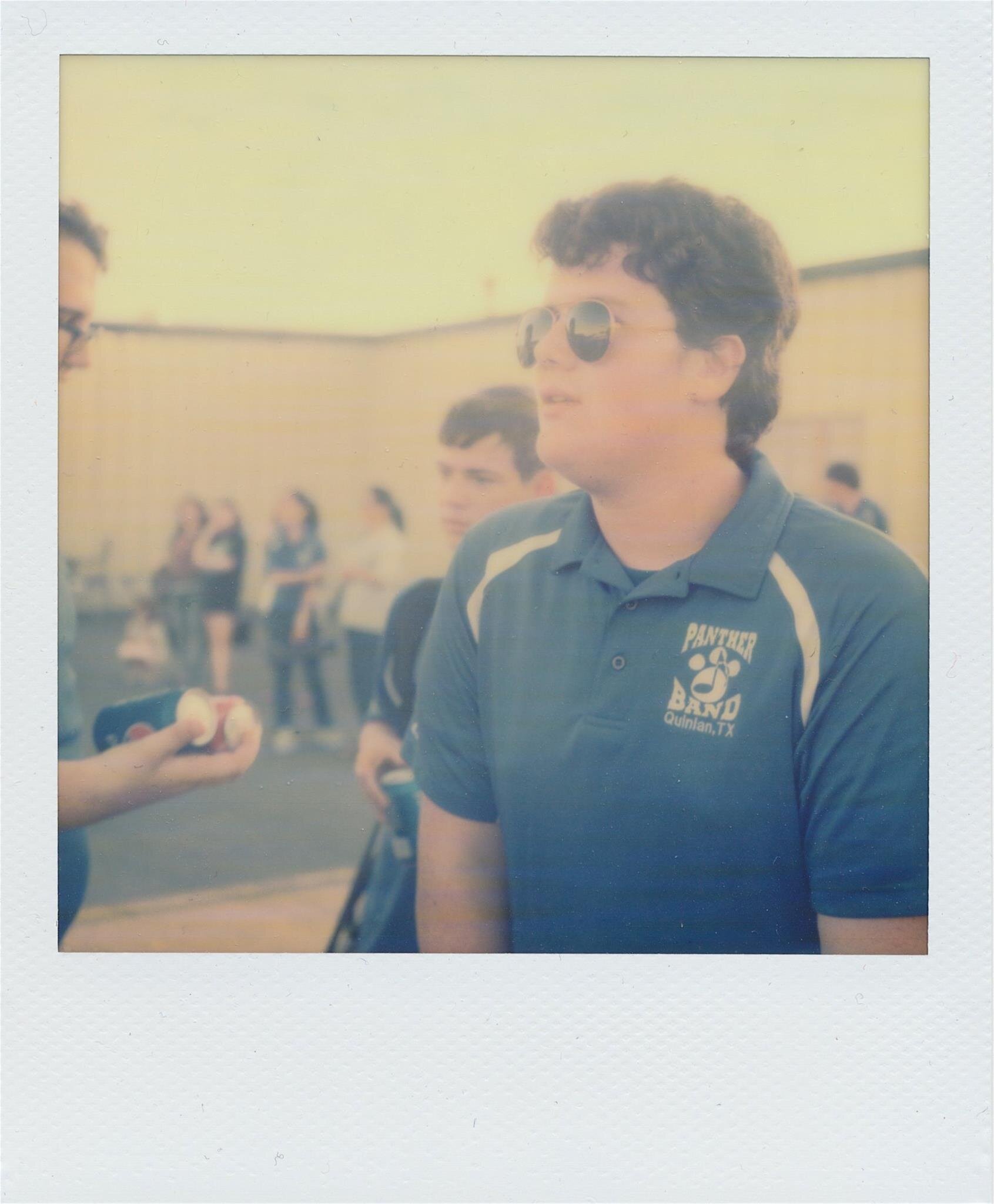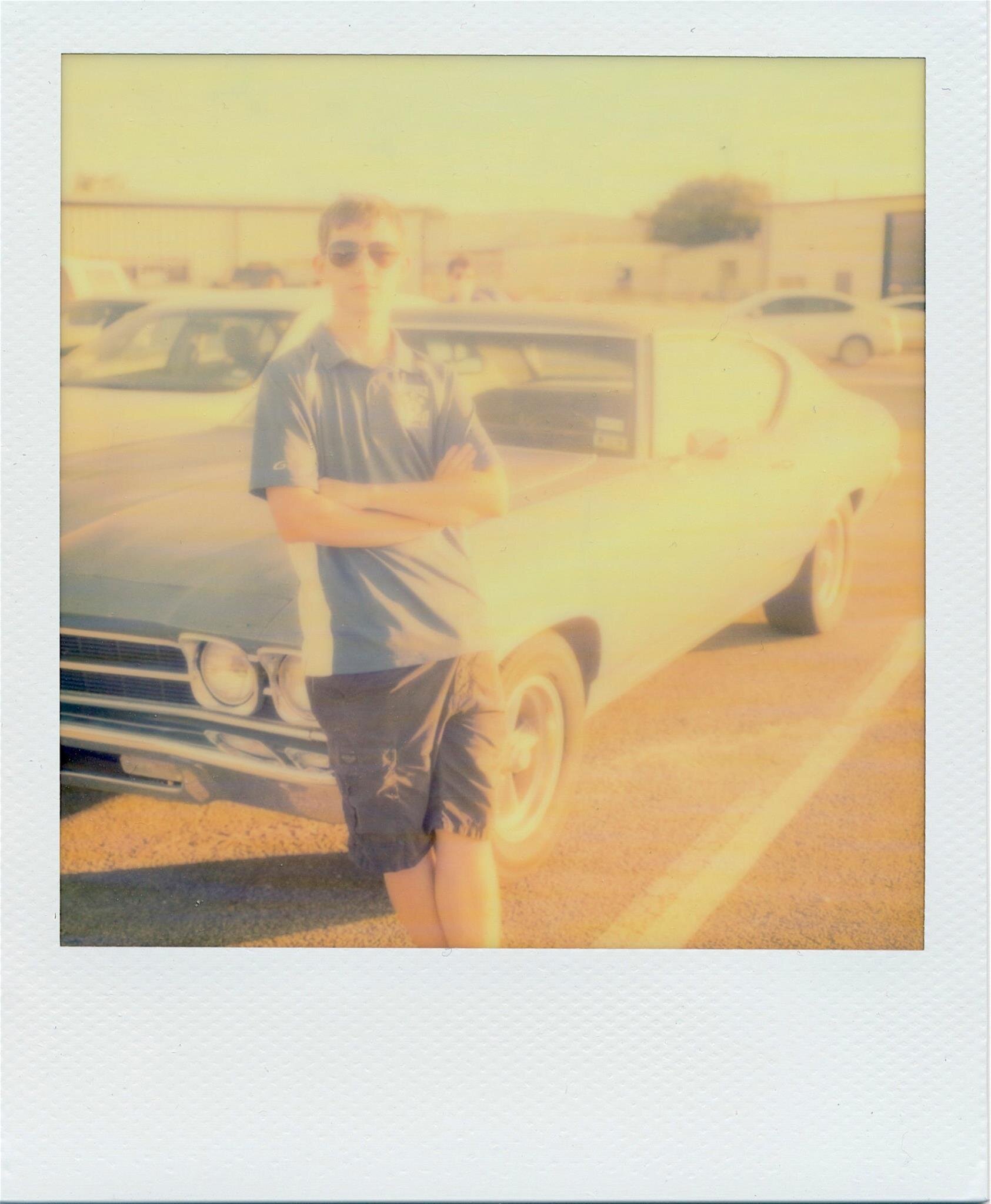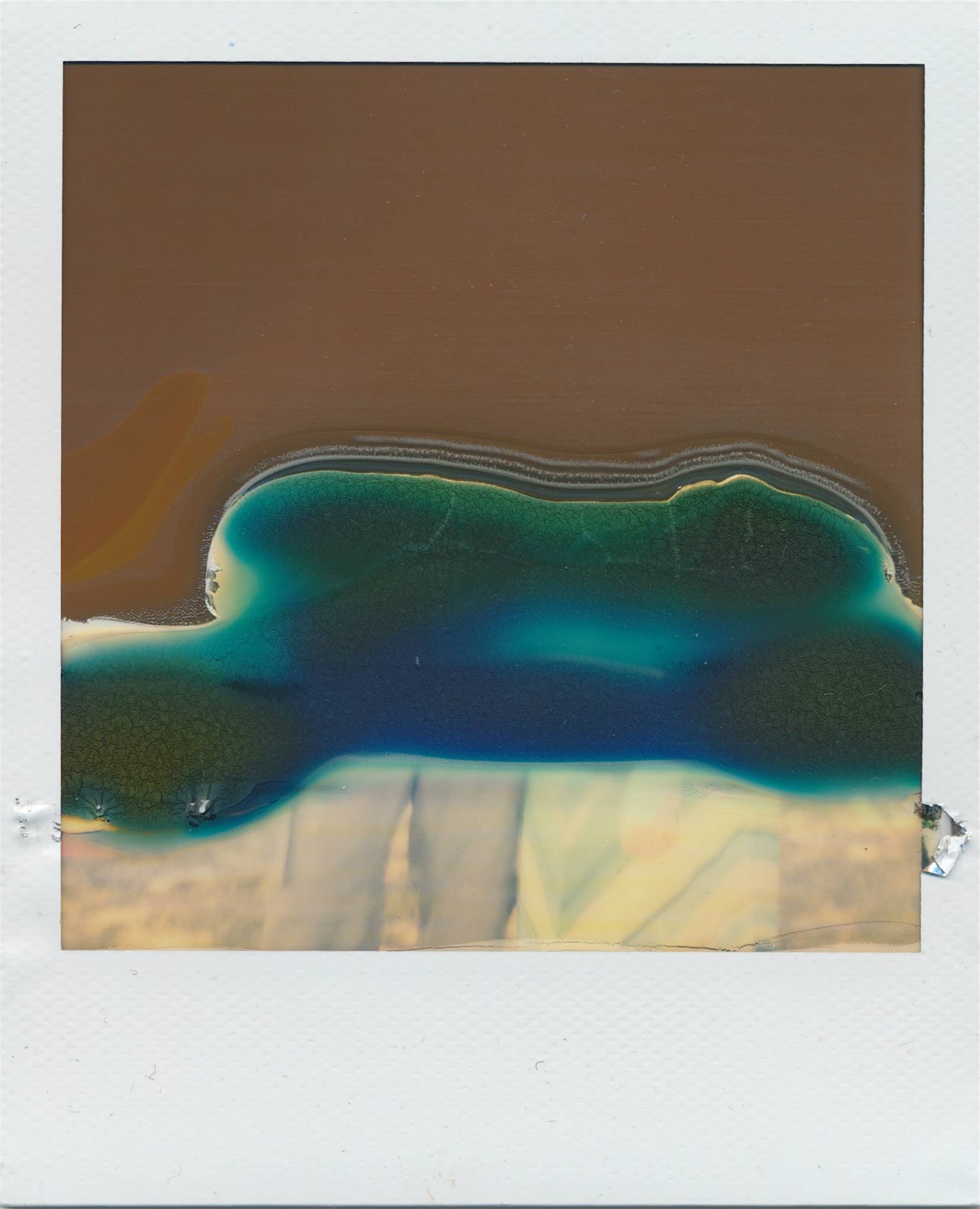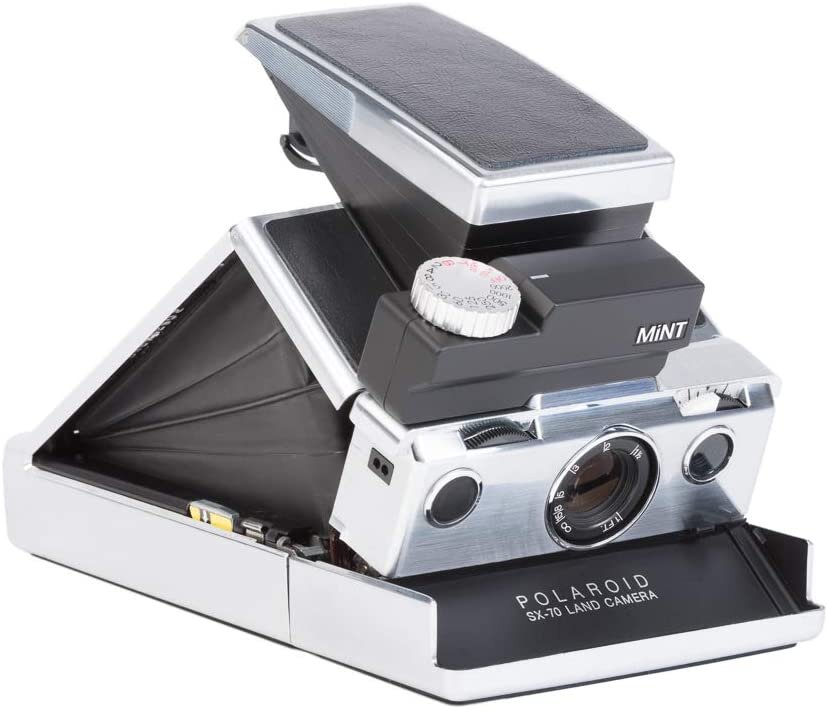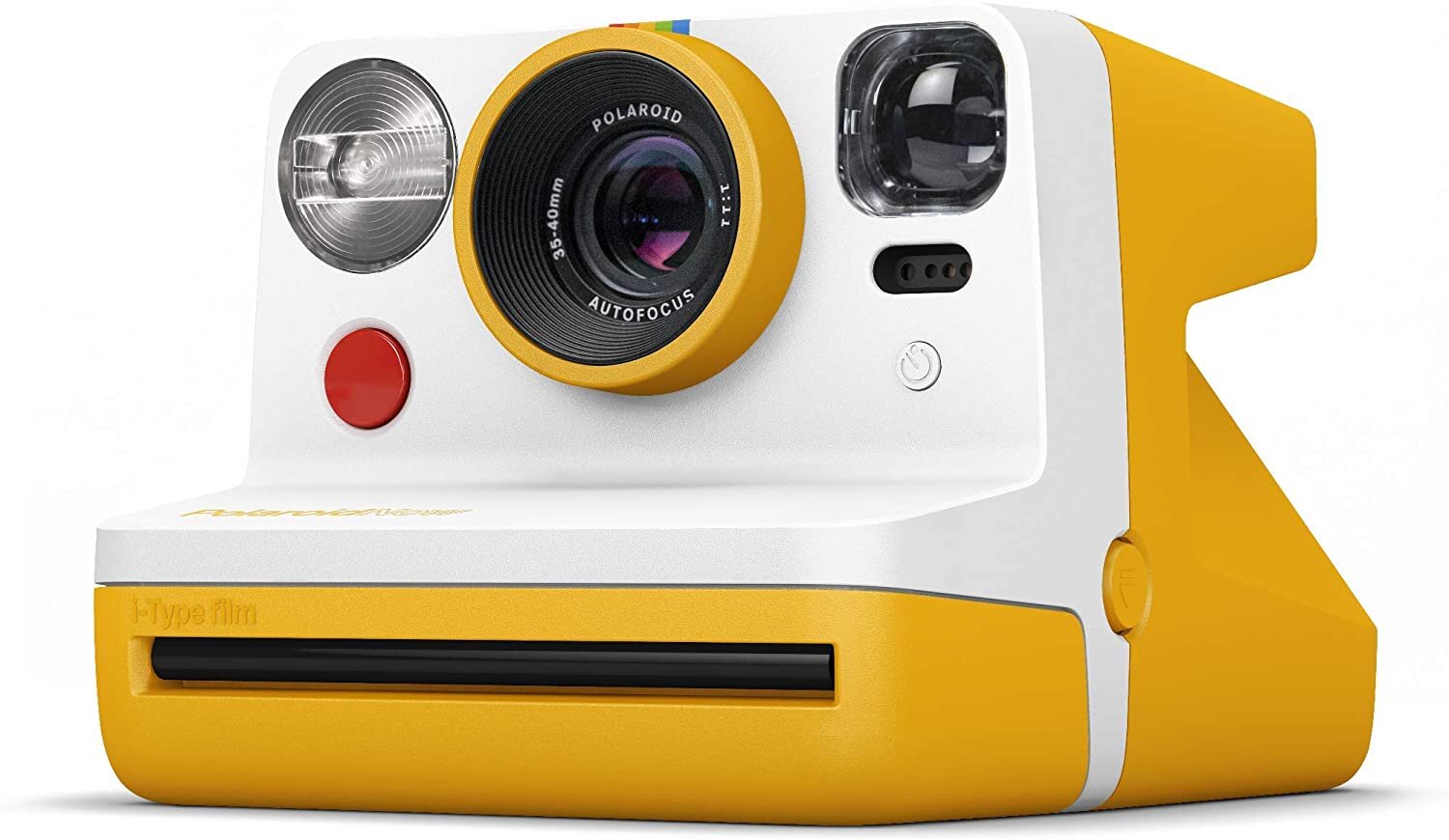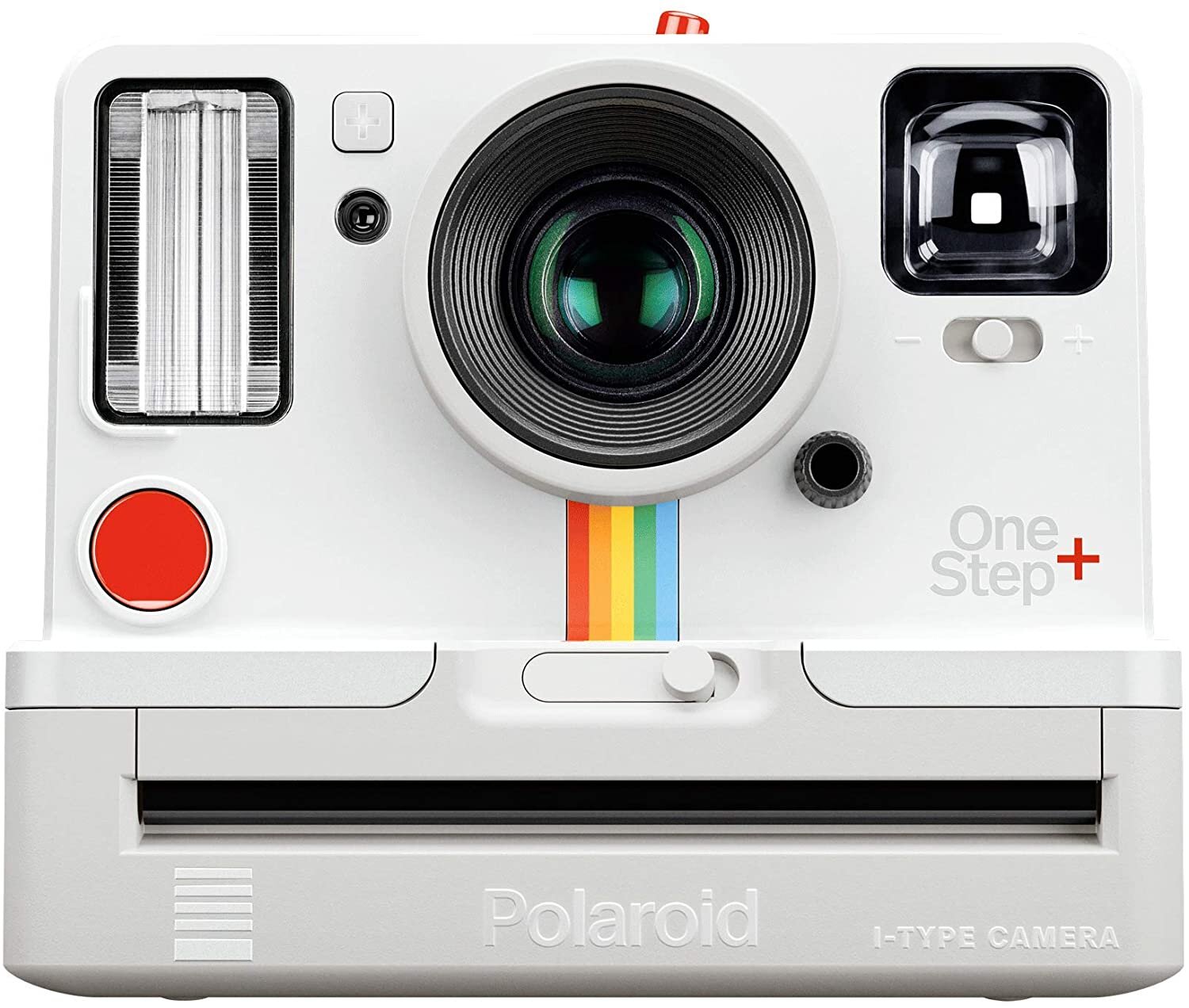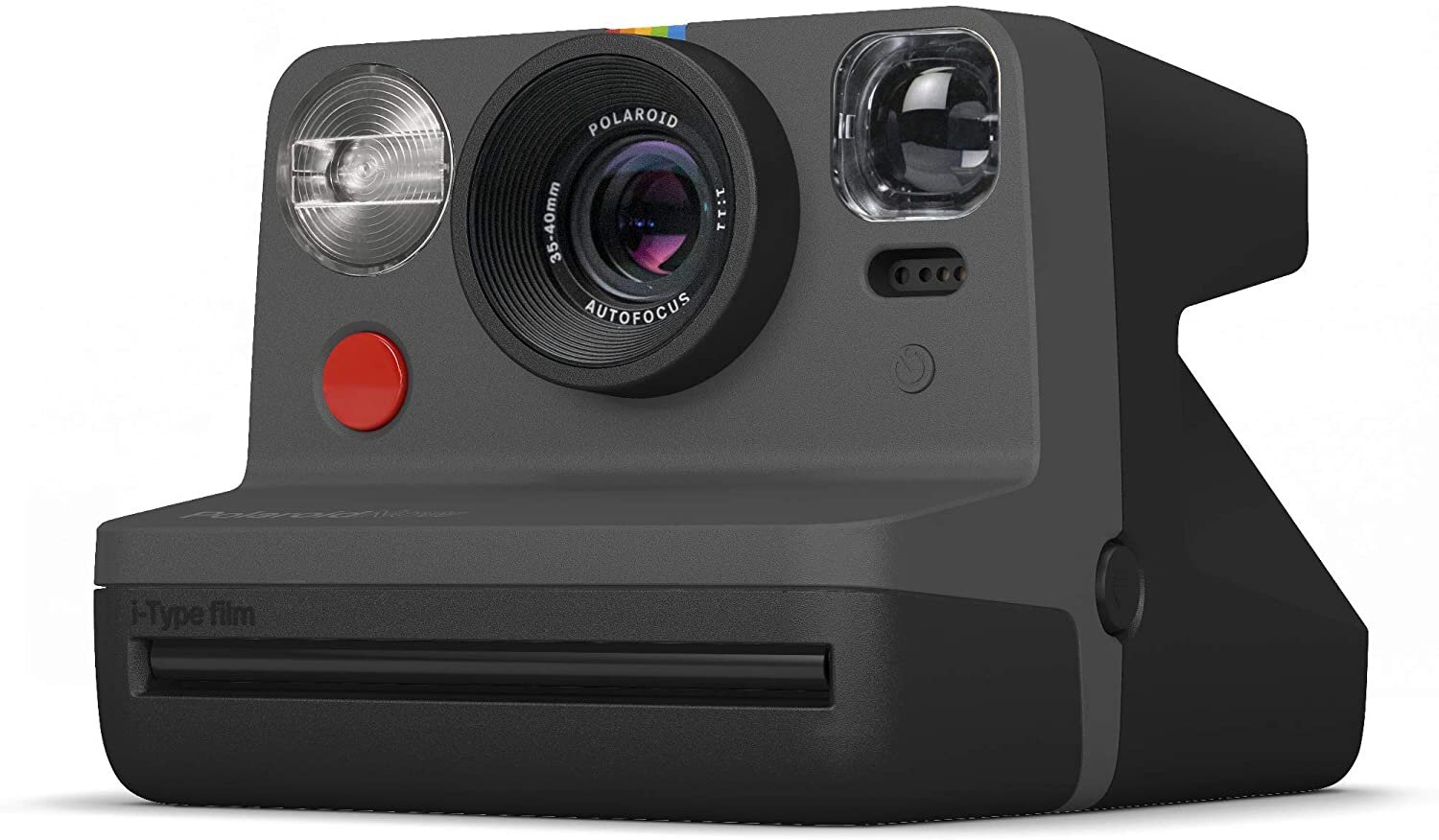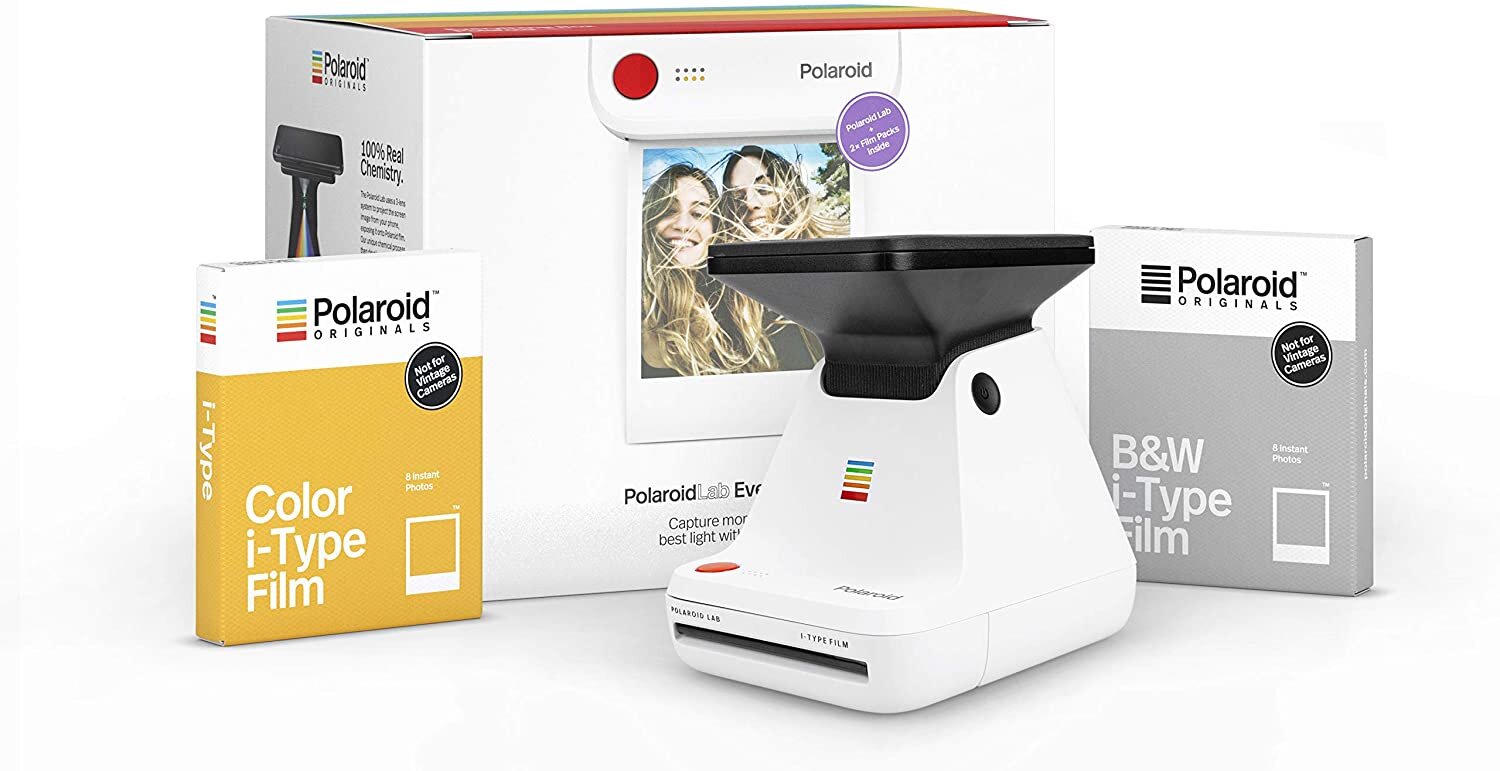The Impossible I-1 Instant Camera - A Polaroid Film Camera
The Impossible I-1 Instant Film Camera has been out for a few years but its still an amazing device and takes great photos and Polaroid I-Type film is available everywhere!
I have a lot of instant cameras. It honestly is a real problem for me. They are all just so fun and cute! But among the dozens and dozens of modern and vintage instant cameras I own, there’s one instant film camera that is my absolute favorite! Today we are going to be talking about that camera, the positives, negatives, and everything in between!
What is the Impossible I-1 Instant Film Camera
It was the first newly designed Polaroid instant film camera to be released in decades. The Impossible Project had been recreating Polaroid instant film for years when they decided to branch out into camera design. Its solid matte-black finish and really almost minimalist design made it unique in the world of colorful and find vintage instant cameras from polaroid and even the Fuji Instax cameras. The I-1 comes equipped with Bluetooth, an app for your iPhone or iOS device as well as Android, and for the first time in a Polaroid Camera, it comes with an internal, rechargeable battery. The I-1 can use Polaroid 600 film but was designed to use I-Type film, The Impossible Project’s film that came without a battery pack.
The Impossible I-1 has a built in LED flash system which produces a significant amount of light. The flash can be turned off using a switch on the side of the lens. There’s also an exposure adjustment switch on the other side of the lens with a + and - allowing you to make minor adjustments in the exposure level.
The Impossible I-1 Instant Film Camera Specs
Optics
Focal Length - 82-109mm
Aperture - f/10 to 67
Focus Type - Auto & Manual Focus
Minimum Focus Distanc - 1 foot/.3 meters
Exposure Control
Shutter Speed - 1/250 to 30 seconds
Flash
Built-In LED
General
Tripod Mounting Thread - 1/4”-20
Battery Type - Built In
Dimensions (WxHxD) - 4.3 x 5.7 x 4.3” / 10.9 x 14.5 x 10.9cm
Weight - 15.5oz / 439.4g
How Do You Use the Impossible I-1 Camera?
Using this camera is really easy, even if you’re completely new to instant cameras. Most of the cameras functions are automated by default, but can be overridden using the app. Here’s a quick run down on how to use the Impossible I-1 camera.
How do I Load I-Type or 600 Type Film?
Loading film into the camera is easy. There’s no difference in how you load the film, regardless of what type you are using. I-type and 600 type film load exactly the same way. On the front of the camera is a small slider switch. While holding the camera facing you, slide the switch to the right and then pull down on the front film door. Open your pack of Polaroid I-Type film or 600 Type film and slide the cartridge into the camera, narrow end first. Your film pack will reach a point where it stops sliding easily and appears to almost be in place. Give the pack one more little push, which will force the narrow plastic tab down on the front of the film cartridge. Now simply close the film door. The camera should automatically eject the dark slide. Once the dark slide is ejected, you’re ready to use your camera!
How do I take Pictures with the Impossible I-1 Camera?
You have a couple of options with the I-1 instant film camera. You can just use the camera and snap away, or you can use the app to take photos. Both options work great and mostly depend on what kind of photo you are trying to take.
To use just the camera, you turn the side rotary switch to the solid white circle, which turns the camera on. The LED ring flash will light up and indicate how many images you have left in your pack. From here, you can turn the flash off or on and adjust the exposure by using the switches on either side of the lens.
Once you have everything set, its time to frame up your picture. For me, this is the most frustrating part of using the camera. The viewfinder is a dual element device that requires you to align a smaller circle on the back element with a larger circle on the front element. It works but it just doesn’t feel precise to me. I find myself struggling to get it right sometimes. But it does always give me a pretty accurate image when comparing the picture to what I actually saw through the viewfinder. The viewfinder is held on magnetically so make sure that it is always snuggly in its correct position as it can be knocked off easily.
A screen shot of the Impossible I-1 Camera’s app as it appears on iOS devices.
Using the app to take photos is a little more complicated. The app allows for the following modes:
Remote Trigger
Manual Mode
Self Timer
Double Exposure
Noise Trigger
Light Paint
Color Paint
Additionally there’s a scanner mode that allows you to take a picture of your polaroid with your phone. There’s also a handy link to help you buy a new Polaroid Instant Camera under the “upgrade” button.
A screenshot of the app in manual mode.
Each of these modes is pretty much self-explanatory. I use the remote trigger quite a bit as well as the manual mode. I love the manual mode because it allows to make sure I’m getting the right exposure rather than wasting film. The manual mode uses your phones camera as a light meter and helps you to adjust the settings manually to get the exposure you want. Its very handy!
Double exposure is fun also, as is the light and color paint features. I’ve personally never used the Noise Trigger, but its a nice option to have.
Are There Any Problems with the Impossible I-1 Camera?
No camera is perfect, so definitely yes. After several years of use, I really only have two complaints about this camera. The first is the viewfinder, as I’ve already said it can easily be knocked off or the elements won’t extend all the way when you release them. It is a little difficult to use sometimes as well. But the biggest issues I’ve found is the internal battery. Every time I pick up this camera to use it, the battery is dead. Now this is probably completely my fault, but its just a pain to remember to put it on the charger ahead of time. I understand why Impossible designed the camera this way, but I can also see why Polaroid originally put the battery packs inside the film cartridges. If you just make sure and put this camera on the charger ahead of time, you’ll never have an issue!
If you’re having problems getting your images to come out, make sure you check our post about troubleshooting your Polaroid Film by CLICKING HERE.
A Few Impossible I-1 Camera Tips
Low-Light is not this camera’s friend - us it in places with lots of light!
Every time you power up the camera, the LED’s on the flash tell you how many exposures you have left in your pack of film
Double check your viewfinder to make sure it is on snuggly and that the elements are both in their full upright positions.
Charge your battery often!!!
Can I still buy an Impossible I-1 Instant Film Camera?
Yes! But finding one can be a bit tricky. They are available on Amazon for $199 in new condition. They are also available on Ebay for various prices ranging from $179 to over $250. You can find them in used condition in a lot of different places from Facebook Marketplace to Craigslist. These cameras haven’t been produced in several years so finding new cameras is only going to get more difficult as time goes on. But this is a great camera to have and has been extremely reliable and offers quite a bit of control over the image when shooting in manual mode with the app!
Where can I buy film for the Impossible I-1 Instant Camera?
It is actually available at a lot of different places! You can head on over to the Polaroid Website and by film directly from them! Or, check out my earlier blog post about “Where Can I Buy Polaroid Film” to find a shop near your or to order film online!
And when you get ready to put all of those amazing photos you’ve taken in to an album, read all about The Best Photo Album for Your Polaroids Here!
What's Wrong with My Polaroid Film?
Troubleshooting your Polaroid film can be frustrating! This easy guide will give you an idea of where to start!
Last Updated: April 2, 2024
You got finally got your Polaroid camera and film and you’re excited about finally getting to take some photos. You get your model (your cat, dog, mom, dad, friends, whoever) posed just right and click the shutter release and hear that oh-so-pleasing motor noise as the first frame is eject. You wait patiently as the image slowly appears. Its kinda faint and has some weird coloring, got some smears but those are hopefully fading, but there’s an image there. You wait some more… And some more, for what feels like forever. When finally you figure the image is done. But as you behold your first polaroid image, the excitement melts into disappointment.
“Did I do something wrong?” is always your first thought.
“Maybe its the camera?”
“Maybe its the film? Is my film bad?”
What’s Wrong with My Polaroid Pictures?
There are a lot of things that could go wrong during the process, so don’t feel bad if your first images aren’t coming out right. Here’s a quick reference guide of things you can do to help make sure you get the best possible images when using Polaroid Film.
1. Don’t Let Any Light Hit the Polaroid When it Ejects from the Camera
Most of the newer cameras come with a frog tongue already installed in the slow where the film is ejected for this very purpose. The old Polaroid films were not as sensitive to light as the modern film is. Beginning with the Impossible Project and then Polaroid Originals and now back to Polaroid, all of the modern film suffers from a very serious light sensitivity issue. I didn’t learn this was an issue for quite some time back in the Impossible Project days and so a lot of my images were ruined from light exposure early in the developing process.
The best way to protect your film is to immediately get it out of any light, even if its still under the frog tongue. I make a practice to have a dark bag or keep the film box handy and as soon as the images are ejected, I put them directly in the dark somewhere and don’t look at them until they are completely developed.
If you’re using an older camera, like a Polaroid SX-70, you can purchase a frog tongue for your camera and its very easy to install. I have one for my SX-70 and it has saved me a lot of heartache with the developing process.
2. Temperature Control is so Very Important for Polaroid Film
Unused film exposed to heat and cold will cause a drastic color cast in your final image. Developed film will have either a yellowish or purple hue. Its definitely noticeable and once exposed to drastic temps, the film will not develop correctly.
Polaroid film also needs a stable temperature to develop correctly. If it’s cold out, stick the film in a pocket close to your body to keep it warm. If its warm out, get the frame somewhere cool as quickly as you can. Polaroid produces what is a fair weather film and using it in any harsh conditions means that you must give the film special care.
3. Avoid Purchasing Older Polaroid Film Packs
As Polaroid film ages, it doesn’t always seem to produce as good of results. Many of the film packs actually have their manufacture day stamped subtly somewhere on the box. Look for it and try to get the newest, freshest packs you can get.
Also, Polaroid does continually make small shifts and adjustments to their film. The new films generally offer the best results. While you can buy Polaroid film from local retailers like Target, Walmart, BestBuy, and others, I have found that ordering it directly from Polaroid gets me the freshest film packs.
4. Keep Your Rollers Clean
In the beginning, it was very common for the chemical pods in the films to leak out a little. Often the rollers of your camera would have dried chemical build up on there after a few photos and that will cause the rollers to struggle to spread the chemical evenly across the exposed film. A Q-Tip and a little Isopropyl Alcohol will clean those rollers right up!
5. I’ve got Blue Streaks on my Polaroid Film
This issue first showed up after then name changed from The Impossible Project to Polaroid Originals. The blue streak issue has mostly gone away with the newest of films, but it occasionally still shows up. Especially in older films. Unfortunately, there isn’t really anything you can do for the blue streak issue. They can sometimes add to the look but more than likely they’ll just mess up your image. This phenomenon has a specific name, Opacification Failure.
6. My Polaroid is Blurry
More than likely, its motion blur from a long shutter speed tryin get film exposed properly. If you’re images are turning out blurry, then you can move to an area with better lighting, or add/turn on the flash on your camera.
It could also be an issue of you being too close to the camera. All cameras/lenses have a minimum focal range. The minimal focus range for most Polaroid Instant Cameras is about an arm’s length. Anything close just won’t focus.
7. My Polaroid is Too Dark
The image is under exposed. Polaroids require a decent amount of light. Daylight or a flash are almost always required to get a proper exposure. Try turning your flash on, using a reflector to move some light around, or move your subject to a location where there is plenty of light.
Polaroid 600 and I-Type film work a little bit better in darker situations than the SX-70 Polaroid film does. Polaroid SX-70 film requires ridiculous amounts of light to expose correctly!
Other Polaroid Trouble Shooting Resources
If these tips don’t help you get the best photographs ever, then head on over to the Polaroid trouble-shooting page HERE. There are a lot of resources there to help you figure out what exactly might be going on with your film.
I’ve got a few other resource posts on Polaroid Film - take a look at those post by clicking the links below:
Is Polaroid Bringing Back Peel-Apart Film?
Finally - An Decent Album for your Polaroids
Check out the new photo albums for your Polaroid Photos!
I got way to excited this week about something that most people wouldn’t even concern themselves with looking at.
But it solves a huge problem for me!
I posted in a previous blog post about the issue with Fuji Instax Mini photos piling up and having no where to put them. There are so many great albums on amazon for the Fuji Instax Mini photos, but there just aren’t much for the polaroids.
Well this week, I happened to notice that Polaroid has released some albums (check them out here). There’s a small album that only costs $11.99 and holds 40 images (which is 5 packs of film) and a large album that holds 160 photos (that’s like 20 packs of film) for only $19.99.
To be honest, I’ve just been sticking the photos back in the pack boxes and then putting those boxes back into bigger boxes. Its kind of this ridiculous Russian doll thing. But these albums will be awesome!
So mine are on order and I’m eagerly awaiting their arrival. If you love Polaroid’s stuff, like I do, check out all of their cameras and film types available on their Amazon story by CLICKING HERE - they’ve got so much cool stuff to browse and buy.
If you purchase one or both of these albums, let me know what you think of them!
Polaroid Instant Film - STOP SHAKING YOUR FILM!
Polaroid film is alive and well! Learn about all of the new products as well as the old ones! And for the love of all things film - STOP SHAKING YOUR POLAROID PICTURES!
When I was a kid, Polaroid was IT! They were THE BRAND of instant film and no one could compete. But like all really well established companies in the 1990’s, Polaroid just lost their direction and eventually would stop producing instant film all together in favor of producing really really crappy TV’s.
Without going into a really long history, a few guys bought a factory and the tools from polaroid and decided to try to preserve polaroid type film from completely disappearing. They named the venture the Impossible Project and began trying to recreate the Polaroid chemistry, which was a difficult task. I’ve been purchasing their film since the beginning and let me tell you, its come a really long way. Back then, it was not uncommon to get bad batches, frames with flaws, you couldn’t shoot in hot or cold temps at all. Couldn’t expose it to any sort of light immediately after exposure. It was a mess…. But it worked and it gave us all hope. Fast forward a few years and things are very much different!
The Impossible Project did some licensing and became Polaroid Originals and then, recently, just polaroid. The instant film has improved dramatically but its still finicky compared with the old school Polaroids.
This quick guide will help you with everything you need to know today to get started shooting Polaroid film!
The Cameras
Polaroid made a lot of cameras. And some of theme take different types of film. There was pull-apart film, integral film, spectra film, lots of different variants.. In order to know what kind of film you need, you need to start with getting the right camera!
Vintage Cameras
The best vintage camera you can get is the SX-70. They are sturdy, well build, and have a cool factor that you can’t get from any other Polaroid Camera. But, they are expensive. Even old worn out ones are expensive. If you’re gonna get a Polaroid SX-70, your best bet is to spend a little extra money and get a refurbished one. Mint, an amazing company that makes all sorts of stuff for polaroid, has a refurbished and upgraded model that I love! They upgrade all of the electronics and give this classic new life again! Check out this camera here!
If you can’t afford an SX-70, you’re in luck because Polaroid switch to manufacturing much more affordable models later on. The Polaroid 600 and subsequent 600 series cameras are cheap, affordable and easy to use. You can also get these refurbished from Polaroid! They are awesome and a lot of fun and super affordable. You can check out a refurbished 600 camera here!
Modern Cameras
Polaroid has cranked their camera production back up and they have a lot of really great and affordable cameras with some modern features like Bluetooth connectivity and the ability to shoot a more modern film type. Polaroid also makes a photo printer that allows you to print the photos on your phone directly to polaroid film! I own a ton of these cameras and I haven’t been disappointed by any of them!
Buying Film
With all of these different options for cameras, it shouldn’t surprise you that there are a few options for film. Fortunately, the breakdown on films is really easy to understand!
Polaroid SX-70 Film
Everything labeled SX-70 Film is just for the SX-70 camera. Some of the refurbished SX-70’s can actually shoot 600 type film, but when you purchase the camera it will tell you if it will take a different film type. I own an SX-70 and trust me, you can only shoot SX-70 film through it. The difference is the ISO of the film as the SX-70 is a much slower camera/film. You can pick up some film for your SX-70 HERE!
Polaroid 600 Film
The Polaroid 600 film fits all classic/old 600 type cameras. This includes a really really broad range of models. Basically, if you own an old polaroid and it isn’t an SX-70, it takes the 600 film. You can pick up a pack of 600 film HERE!
Polaroid I-Type
And lastly, if you own any modern device from the OneStep2 to the Polaroid Lab, you’re gonna want to use I-Type film. The I-Type and 600 type film packs is the battery. The old cameras require batteries to be integrated into the film packs. Polaroid now makes the cameras with rechargable batteries which saves a lot of waste! You can use 600 type film in a new camera but you cannot use an I-Type film in a classic camera. It just won’t work because there’s no battery. You can pick up a pack of I-Type film HERE!
Final Thoughts
Modern Polaroid Instant Films are still a little quirky to use. After you expose the image (click the red button) you absolutely cannot expose the image to light. As the image is ejected from the camera body, put it into something dark and allow it to remain there until it is full developed! I’ve ruined a lot of images by allowing them to be exposed to sunlight. Ambient temperature is also a huge issue, especially for me down here in Texas. The heat is not good for the film. Neither is the cold. If you’re shooting in the cold, put the film in your pocket to help keep it warm. And if you’re shooting in the heat, get your shot to the AC or at least the shade as quickly as you can!
There are a lot of great Polaroid products out there. You can browse a broad selection of their products here! Take your time and browse and have a lot of fun!
And lastly - no matter what - DO NOT SHAKE YOUR POLAROID PICTURES!!! Lay them in a cool dark place and let them develop on their own. Shaking does not help!
If you have any questions or need some help - feel free to contact me at tony@shutterjunkies.org
Polaroid is all about fun and that spur of the moment, living and enjoying life. Make the most of every shot!



